Ethereum has become a household name in the world of cryptocurrency and blockchain technology. Ethereum has emerged as a game-changer. If you’re wondering, “What is Ethereum, and how does it work?” you’ve come to the right place. In this comprehensive guide, we’ll unravel the intricacies of Ethereum, from its inception to its practical applications. Whether you’re a seasoned crypto enthusiast or a newcomer, this article will provide valuable insights into Ethereum.
What is Ethereum?
Ethereum, often referred to as the “world computer,” is a decentralized, open-source blockchain platform. Unlike Bitcoin, which primarily serves as digital gold, Ethereum goes beyond being just a digital currency. It enables developers to create decentralized applications (DApps) and smart contracts on its blockchain.
The Genesis of Ethereum
Ethereum, often referred to as the second-generation blockchain, was proposed by a young developer named Vitalik Buterin in late 2013. Buterin envisioned a blockchain platform that could do much more than just transfer digital currency. He wanted to create a decentralized world computer, capable of executing smart contracts and hosting decentralized applications.

Ethereum’s development officially began in early 2014, and it garnered significant attention from the cryptocurrency and blockchain communities. In July 2014, Ethereum conducted its initial coin offering (ICO), raising over $18 million to fund further development.
Why Ethereum Matters
Ethereum matters because it represents a fundamental shift in how we think about and use technology. Here are some key reasons why Ethereum has captured the imagination of developers, entrepreneurs, and investors worldwide:
- Smart Contracts: Ethereum introduced the concept of smart contracts, self-executing agreements with the terms of the contract directly written into code. This innovation has the potential to disrupt traditional legal processes, automate transactions, and eliminate the need for intermediaries.
- Decentralized Applications (DApps): Ethereum enables the creation of decentralized applications, which run on a global network of computers rather than centralized servers. This opens up new possibilities for censorship-resistant, tamper-proof applications in various industries.
- Blockchain as a Platform: Ethereum is not just a cryptocurrency but a platform for building decentralized solutions. It provides developers with a robust toolkit for creating blockchain-based projects, from DeFi (Decentralized Finance) to NFTs (Non-Fungible Tokens).
In the following sections, we will explore the core components of Ethereum, how it works, and its potential applications in greater detail.
Blockchain Basics
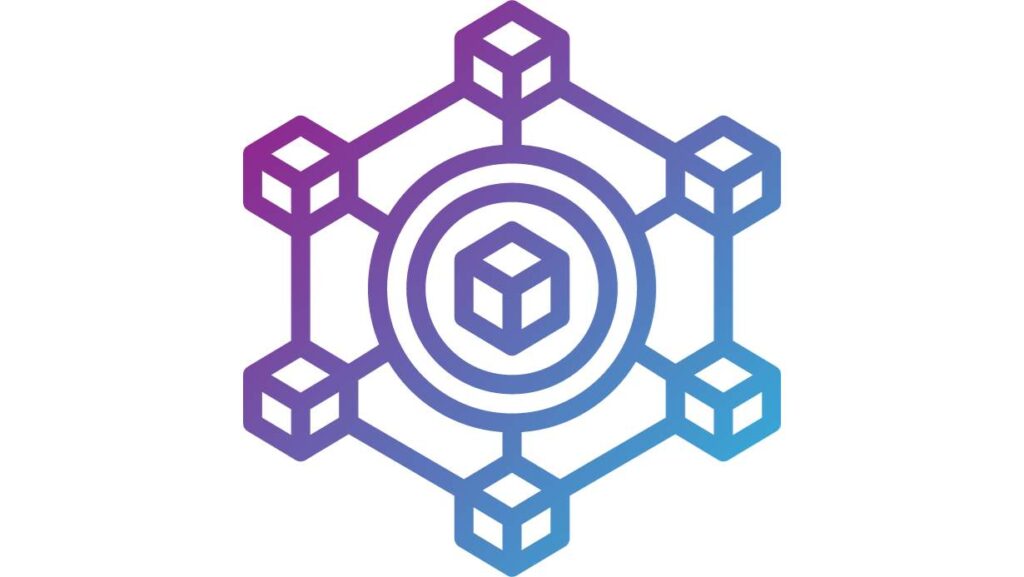
Understanding the Blockchain
Before diving deeper into Ethereum, it’s essential to grasp the basics of blockchain technology. At its core, a blockchain is a distributed and immutable ledger that records transactions across a network of computers. Here’s how it works:
- Decentralization: Instead of relying on a central authority, such as a bank or government, blockchain transactions are verified by a network of nodes (computers) spread across the globe. This decentralization ensures transparency and security.
- Immutability: Once a transaction is added to the blockchain, it cannot be altered or deleted. This feature makes the blockchain tamper-proof and ideal for recording important information.
- Cryptography: Blockchain uses cryptographic techniques to secure transactions and control the creation of new units of cryptocurrency. Public and private keys are used to authenticate users.
How Ethereum Differs from Bitcoin
While Ethereum and Bitcoin share some similarities as blockchain-based cryptocurrencies, they have distinct differences:
- Purpose: Bitcoin primarily serves as a digital currency, enabling peer-to-peer transactions and acting as a store of value. Ethereum, on the other hand, is designed as a platform for creating and executing decentralized applications.
- Scripting Language: Ethereum’s blockchain includes a Turing-complete scripting language, which means it can perform any computation that a typical computer can. Bitcoin’s scripting language is intentionally limited for security reasons.
- Smart Contracts: Ethereum introduced smart contracts, a feature not present in the original Bitcoin blockchain. Smart contracts enable self-executing agreements with predefined rules.
Now that we have a foundational understanding of blockchain and how Ethereum distinguishes itself, let’s explore the Ethereum ecosystem in more detail.
The Ethereum Ecosystem

The Ethereum ecosystem is a vibrant and rapidly evolving landscape that encompasses various components and entities. Understanding these elements is crucial for grasping the full scope of Ethereum’s capabilities.
Ethereum Network
The Ethereum network is the underlying infrastructure that powers the entire ecosystem. It consists of a global network of nodes (computers) that validate transactions and execute smart contracts. The network operates on a consensus mechanism known as Proof of Stake (PoS) in its ongoing transition to Ethereum 2.0.
Ether (ETH) Cryptocurrency
Ether, denoted as ETH, is the native cryptocurrency of the Ethereum platform. It serves multiple functions within the network:
- Transaction Fees: Users pay ETH as gas fees to execute smart contracts and conduct transactions on the Ethereum network.
- Store of Value: Similar to Bitcoin, many investors view ETH as a store of value, holding it as a long-term investment.
- Staking: With the transition to PoS, users can stake their ETH to help secure the network and earn rewards.
Smart Contracts
Smart contracts are self-executing agreements with predefined rules and conditions. They are at the heart of Ethereum’s functionality, enabling automated and trustless transactions. Smart contracts can be programmed to perform various tasks, from transferring assets to triggering actions based on specific events.
Decentralized Applications (DApps)
Decentralized applications, or DApps, are software applications that run on the Ethereum blockchain. They leverage smart contracts to operate autonomously without a central authority. DApps cover a wide range of use cases, from decentralized finance (DeFi) platforms to gaming and identity verification.
In the next section, we’ll explore how Ethereum works under the hood, including the role of nodes, miners, gas, and the Ethereum Virtual Machine (EVM).
How Ethereum Works

Ethereum’s inner workings involve a complex interplay of nodes, miners, gas, and the Ethereum Virtual Machine (EVM). Let’s break down these components to understand how Ethereum operates.
Nodes and Miners
Nodes are computers that participate in the Ethereum network. There are two main types of nodes: full nodes and light nodes. Full nodes store the entire Ethereum blockchain and validate transactions independently. Light nodes, on the other hand, rely on full nodes for transaction verification.
Miners are a subset of nodes responsible for adding new blocks to the blockchain. They compete to solve complex mathematical puzzles through a process called mining. The first miner to solve the puzzle gets to add a new block of transactions to the blockchain and is rewarded with newly created ETH and transaction fees.
Consensus Mechanisms
Ethereum is in the process of transitioning from Proof of Work (PoW) to Proof of Stake (PoS) as its consensus mechanism. Here’s a brief overview of both:
- Proof of Work (PoW): In PoW, miners compete to solve mathematical puzzles, and the first one to solve it gets to add a new block. PoW is energy-intensive and has scalability limitations.
- Proof of Stake (PoS): PoS relies on validators who lock up a certain amount of ETH as collateral to participate in block validation. Validators are chosen to create new blocks based on their stake and other factors. PoS is more energy-efficient and scalable.
Gas and Gas Fees
In Ethereum, every operation requires a certain amount of computational resources, measured in “gas.” Gas is a unit that represents the computational work needed to perform an action on the network. Users pay gas fees to compensate miners for including their transactions in a block.
Ethereum Virtual Machine (EVM)
The Ethereum Virtual Machine (EVM) is a crucial component that executes smart contracts. It’s a decentralized computer that runs on the collective power of the Ethereum network’s nodes. Developers write smart contract code in high-level programming languages, which is then compiled into bytecode that the EVM can understand.
Now that we’ve covered the technical aspects of Ethereum, let’s explore how you can get started with this groundbreaking platform.
Getting Started with Ethereum
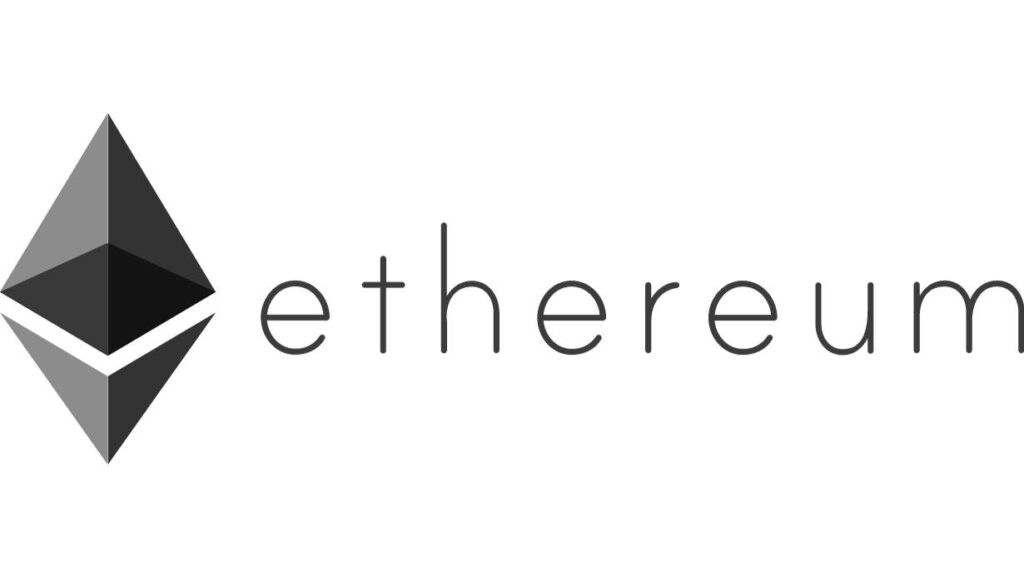
If you’re eager to dive into the world of Ethereum, there are several steps you need to take to get started. This section will guide you through the initial setup and help you become familiar with the Ethereum ecosystem.
Setting Up a Wallet
A wallet is essential for storing, sending, and receiving ETH and interacting with DApps. There are various types of Ethereum wallets, including:
- Software Wallets: These are applications or software programs that you can install on your computer or mobile device. Examples include MetaMask and MyEtherWallet.
- Hardware Wallets: Hardware wallets are physical devices that provide an extra layer of security. Popular options include Ledger Nano S and Trezor.
- Paper Wallets: A paper wallet is a physical document containing your Ethereum address and private key. It’s a secure offline storage option.
Buying and Storing Ether
Once you have a wallet, you’ll need to acquire some ETH. You can purchase ETH on cryptocurrency exchanges using fiat currency or other cryptocurrencies. After buying ETH, transfer it to your wallet for safekeeping.
Security Considerations
Security is paramount in the world of cryptocurrencies. Here are some essential security considerations for Ethereum users:
- Protect Your Private Key: Your private key is the key to your wallet. Keep it safe and never share it with anyone.
- Beware of Phishing Scams: Be cautious of phishing emails and websites that try to trick you into revealing your private information.
- Use Two-Factor Authentication (2FA): Enable 2FA wherever possible to add an extra layer of security to your accounts.
Now that you’re equipped with the basics of Ethereum, let’s explore how developers create applications on this platform.
Developing on Ethereum

Ethereum offers a powerful platform for developers to create decentralized applications and smart contracts. If you’re interested in building on Ethereum, here’s what you need to know.
Programming Languages for Smart Contracts
Smart contracts on Ethereum can be written in several programming languages, including:
- Solidity: Solidity is the most popular language for Ethereum smart contracts. It’s specifically designed for the Ethereum Virtual Machine (EVM) and has a syntax similar to JavaScript.
- Vyper: Vyper is a Python-based language that focuses on simplicity and security. It’s a good choice for developers who want to avoid the complexities of Solidity.
- LLL (Low-Level Lisp-like Language): LLL is a low-level language for Ethereum that provides more fine-grained control but is less user-friendly than Solidity or Vyper.
Deploying Your First Smart Contract
To deploy a smart contract on Ethereum, you’ll need to:
- Write the smart contract code in one of the supported languages.
- Compile the code into bytecode compatible with the Ethereum Virtual Machine.
- Deploy the smart contract to the Ethereum network using a wallet or development tool.
Interacting with Smart Contracts
Once a smart contract is deployed, users and other smart contracts can interact with it by sending transactions. Interactions can trigger specific functions within the contract, such as transferring tokens or executing conditional actions.
In the following sections, we’ll explore some real-world use cases for Ethereum and how it’s making an impact in various industries.
Use Cases for Ethereum

Ethereum’s versatility has led to its adoption in a wide range of industries and applications. Let’s examine some notable use cases where Ethereum is making a significant impact.
- Finance and Banking: Ethereum’s impact on the financial sector is profound. It has given rise to decentralized finance (DeFi), a revolutionary movement that aims to recreate traditional financial services without intermediaries. DeFi platforms enable activities such as lending, borrowing, trading, and yield farming, all within a trustless environment.
- Supply Chain Management: Supply chain management involves tracking and verifying the flow of goods and materials. Ethereum’s transparency and immutability make it an ideal platform for enhancing supply chain processes. Companies can use blockchain to trace the origin of products, reduce fraud, and improve overall efficiency.
- Healthcare: In the healthcare industry, Ethereum-based solutions are being explored for securely managing patient data, verifying the authenticity of pharmaceuticals, and ensuring the integrity of medical records. Patients can have more control over their health data while maintaining privacy.
- Gaming and Entertainment: Ethereum has made a significant impact in the gaming and entertainment sectors through the creation of blockchain-based games, digital collectibles, and NFTs. Non-Fungible Tokens (NFTs) have gained immense popularity, allowing artists and content creators to tokenize and sell their digital creations.
As Ethereum continues to evolve, it faces both opportunities and challenges on its path to mainstream adoption.
Ethereum 2.0: The Upgrade
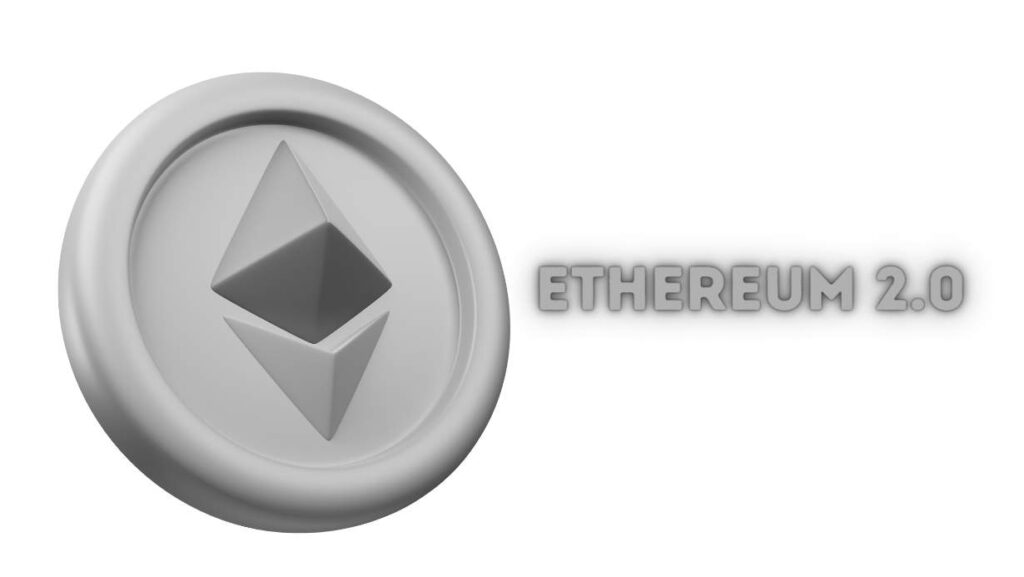
Ethereum 2.0, also known as Eth2 or Serenity, represents a major upgrade to the Ethereum network. It addresses some of the limitations of Ethereum 1.0, particularly in terms of scalability and energy efficiency.
Scalability Challenges
Ethereum 1.0 faces scalability challenges, often resulting in network congestion and high gas fees during periods of high demand. Ethereum 2.0 aims to address these issues by implementing sharding and moving from Proof of Work (PoW) to Proof of Stake (PoS).
Proof of Stake (PoS)
The transition to PoS involves replacing miners with validators who are chosen to create new blocks based on their stake (amount of ETH locked up) and other factors. PoS is more energy-efficient and provides economic incentives to hold and stake ETH.
Sharding
Sharding is a technique that partitions the Ethereum network into smaller, more manageable pieces called “shards.” Each shard can process transactions and smart contracts independently, greatly improving scalability.
The Beacon Chain
The Beacon Chain is the PoS blockchain that runs in parallel with Ethereum 1.0. It coordinates the transition to Ethereum 2.0 and introduces validators. It represents a critical step toward achieving the full upgrade.
While Ethereum 2.0 promises numerous benefits, it also faces challenges and concerns that need to be addressed.
Ethereum: Challenges and Concerns

Despite its tremendous potential, Ethereum grapples with several challenges and concerns that could impact its long-term success and adoption.
- Scalability Issues: Ethereum’s current scalability limitations are a pressing concern. High gas fees and network congestion can make the platform less accessible for users and developers. Ethereum 2.0’s sharding solution aims to mitigate these issues, but the transition is complex and ongoing.
- Security Concerns: Security is paramount in the blockchain space. Ethereum has experienced smart contract vulnerabilities and hacks in the past, leading to substantial losses. Continued research and auditing are essential to improving security.
- Regulatory Hurdles: Blockchain and cryptocurrencies operate in a rapidly evolving regulatory landscape. Ethereum’s compliance with existing and future regulations, especially concerning DeFi platforms, remains a challenge.
- Environmental Impact: Ethereum’s current PoW consensus mechanism consumes a significant amount of energy. While the transition to PoS is expected to reduce energy consumption, environmental concerns persist.
In the competitive landscape of blockchain technology, Ethereum faces competition from other platforms that aim to address its limitations.
Ethereum Competitors
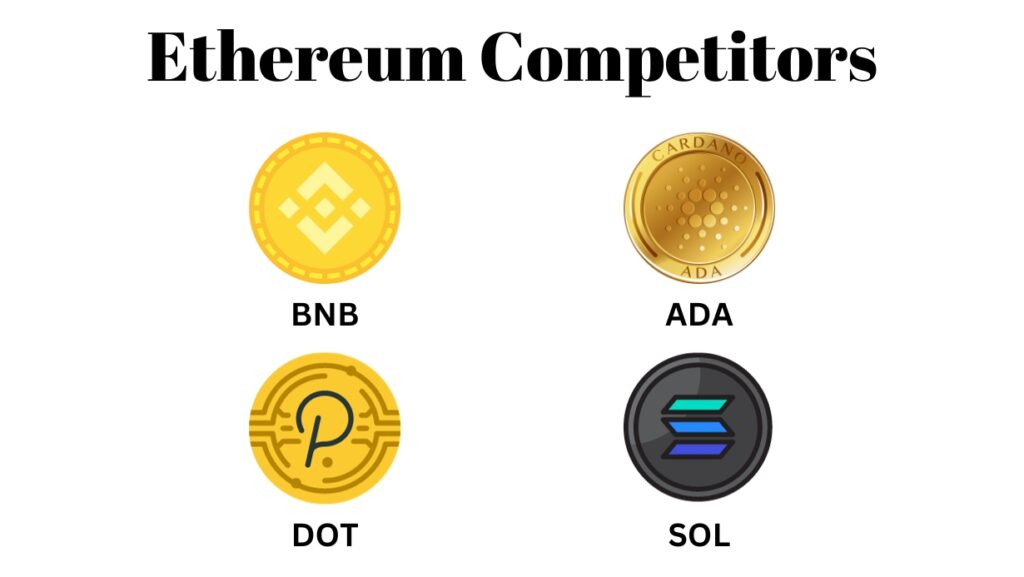
While Ethereum is a pioneer in the world of blockchain and smart contracts, it faces competition from other platforms that seek to provide alternative solutions. Here are some notable Ethereum competitors:
1. BNB Smart Chain (Formerly Binance Smart Chain)
BNB Smart Chain (BNB) is a blockchain platform created by Binance, one of the largest cryptocurrency exchanges. It offers fast and low-cost transactions, making it an attractive option for developers and users.
2. Cardano (ADA)
Cardano (ADA) is a blockchain platform known for its focus on sustainability, scalability, and interoperability. It uses a proof-of-stake consensus mechanism and aims to provide a secure and flexible infrastructure.
3. Polkadot (DOT)
Polkadot (DOT) is a multi-chain network that allows different blockchains to interoperate. It offers scalability and customizability, making it suitable for various use cases, including DeFi and NFTs.
4. Solana (SOL)
Solana (SOL) is a high-performance blockchain known for its fast transaction speeds and low fees. It targets applications that require high throughput, such as decentralized exchanges and gaming.
Each of these competitors brings its unique features and strengths to the table, intensifying the competition in the blockchain space.
Investing in Ethereum

As Ethereum continues to evolve and gain mainstream attention, many investors are considering it as a long-term investment. Here are some key factors to consider when investing in Ethereum:
- Long-Term vs. Short-Term: Before investing in Ethereum, define your investment horizon. Are you looking for short-term gains through trading, or do you believe in the long-term potential of Ethereum as a technology and store of value?
- Staking ETH: With Ethereum’s transition to Proof of Stake (PoS), you can stake your ETH to help secure the network and earn rewards. Staking can be a passive income source for long-term holders.
- Risks and Rewards: Investing in cryptocurrencies carries inherent risks, including price volatility and regulatory changes. It’s crucial to conduct thorough research, diversify your portfolio, and consider your risk tolerance.
In the next section, we’ll explore the media’s role in shaping perceptions of Ethereum, including influential figures, milestones, and controversies.
Ethereum in the Media

The media has played a significant role in shaping public perceptions of Ethereum. Let’s take a closer look at how Ethereum has been covered in the media, including influential figures, notable milestones, and controversies.
- Influential Figures: Several individuals have played instrumental roles in Ethereum’s development and promotion. Vitalik Buterin, the co-founder of Ethereum, is perhaps the most well-known figure in the Ethereum community. Other influential developers, investors, and advocates have also contributed to Ethereum’s growth.
- Notable Milestones: Ethereum has achieved several significant milestones since its inception. These include the launch of the Ethereum mainnet, the rise of decentralized finance (DeFi), the emergence of NFTs, and ongoing upgrades like Ethereum 2.0.
- Scandals and Controversies: Like any groundbreaking technology, Ethereum has had its share of scandals and controversies. These may include smart contract hacks, regulatory disputes, and debates within the Ethereum community.
The media’s coverage of Ethereum has influenced its adoption and perception, making it a topic of interest for both mainstream and tech-focused publications.
Ethereum: Future Outlook

Ethereum’s future is filled with promise and potential. As it continues to evolve, it is poised to have a profound impact on various aspects of our lives. Let’s explore some key areas of Ethereum’s future outlook:
Ethereum’s Role in Web3
Web3 envisions a decentralized internet where users have more control over their data and interactions. Ethereum is a foundational element of Web3, powering decentralized applications and enabling new forms of digital ownership and governance.
Eth Integration with Traditional Finance
Ethereum’s DeFi ecosystem is gradually integrating with traditional finance, bridging the gap between decentralized and centralized systems. This integration could revolutionize how financial services are accessed and delivered.
Global Adoption
Ethereum’s global reach and accessibility make it an attractive platform for developers and users worldwide. As adoption grows, Ethereum could become a universal standard for decentralized applications.
Technological Advancements
Ethereum’s development is ongoing, with continuous improvements and upgrades. As scalability solutions are implemented, Ethereum could handle a higher transaction volume and become more energy-efficient.
In conclusion, Ethereum is not just a cryptocurrency; it’s a transformative technology that has the potential to reshape industries, empower individuals, and redefine how we interact with digital assets and applications.
Ethereum Resources
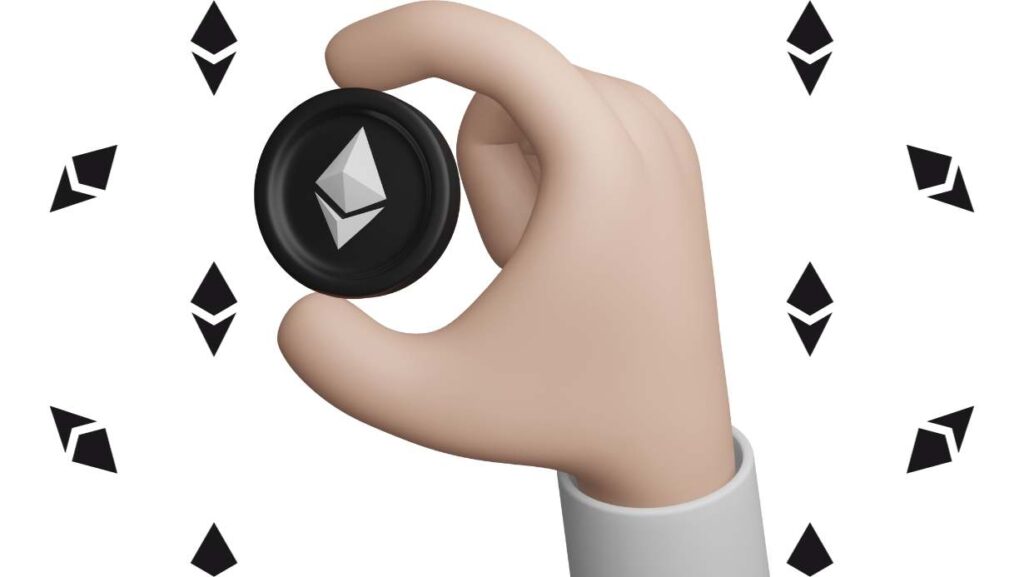
If you’re interested in diving deeper into Ethereum, there are numerous resources available to help you learn and stay informed:
- Official Website and Documentation: Visit the official Ethereum website and explore the documentation to gain a comprehensive understanding of the platform.
- Online Communities: Join online communities and forums like Reddit’s r/ethereum and Ethereum Stack Exchange to connect with fellow enthusiasts and developers.
- Books and Courses: Consider reading books and enrolling in courses that cover Ethereum and blockchain technology in-depth.
- Conferences and Events: Attend Ethereum-related conferences and events to stay updated on the latest developments and network with industry professionals.
Conclusion
In this comprehensive exploration of Ethereum, we’ve covered its origins, inner workings, applications, challenges, and future outlook. Ethereum represents a pivotal moment in the evolution of blockchain technology, offering endless possibilities for innovation and disruption.
As Ethereum continues to push the boundaries of what’s possible, it invites individuals and businesses to participate in a decentralized future where trust, transparency, and autonomy are at the forefront of technological progress.
FAQs
How do I buy Ethereum?
You can buy Ethereum on cryptocurrency exchanges using fiat currency or other cryptocurrencies. Popular exchanges like Coinbase, Binance, and Kraken offer Ethereum trading.
Is Ethereum secure?
Ethereum's blockchain is considered secure due to its decentralized nature and robust consensus mechanism. However, like any technology, it's essential to practice good security measures, such as using hardware wallets and secure passwords, to protect your Ethereum assets.
Can I develop my own DApp on Ethereum?
Yes, Ethereum provides tools and documentation for developers to create their own decentralized applications. You can start by learning Ethereum's programming language, Solidity, and exploring developer resources.
How can I get involved in the Ethereum community?
To get involved in the Ethereum community, you can join online forums, attend Ethereum meetups, and contribute to open-source projects on GitHub. Engaging with the community is a great way to learn and collaborate.
See Also: The Best App for Cryptocurrency Trading: Free and Paid Apps










